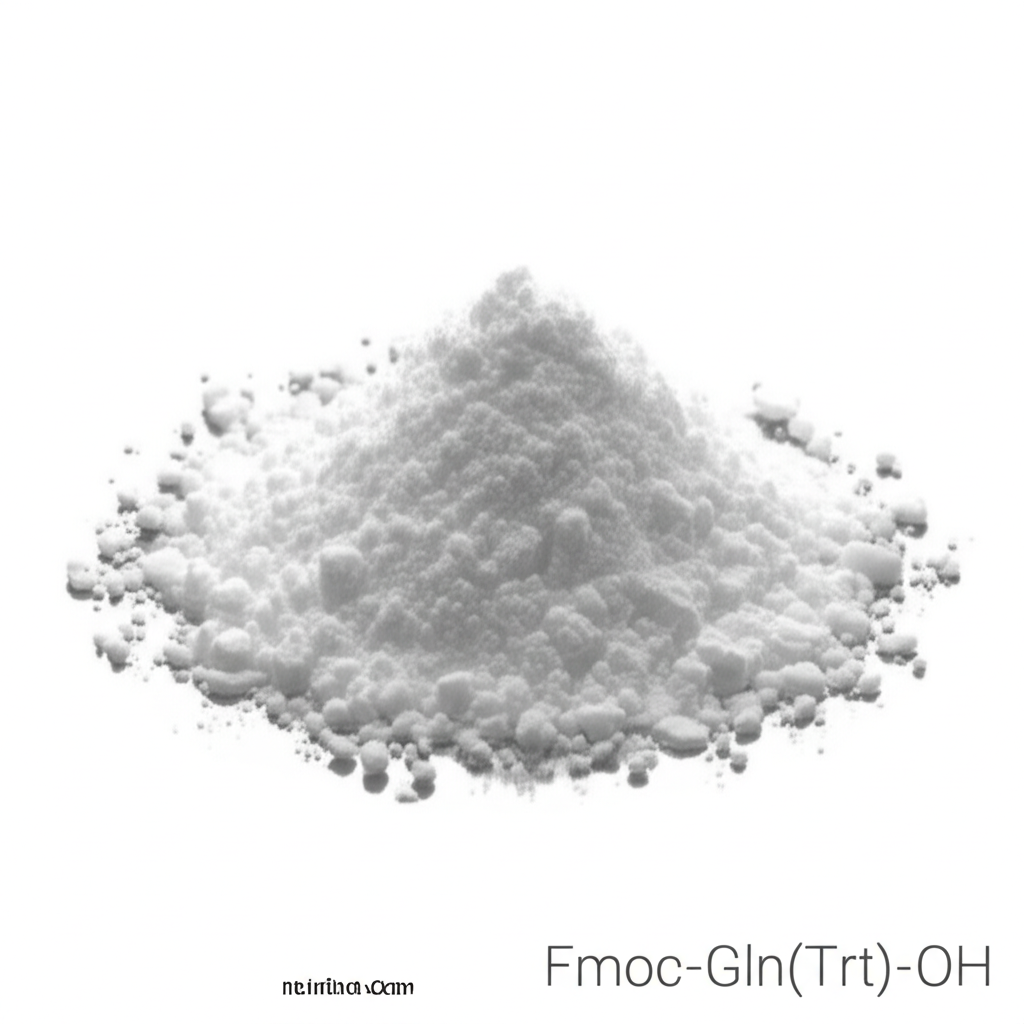Fmoc-Gln(Trt)-OH: Your Trusted Supplier for High-Purity Peptide Synthesis Reagents in China
Discover the advantages of using Fmoc-Gln(Trt)-OH, a critical component for advanced peptide synthesis. As a leading manufacturer in China, we ensure exceptional purity and reliable supply for your research and production needs.
Get a Quote & SamplePremium Quality Fmoc-Gln(Trt)-OH for Superior Peptide Synthesis

Fmoc-Gln(Trt)-OH (CAS: 132327-80-1)
NINGBO INNO PHARMCHEM CO.,LTD. is a premier manufacturer and supplier of Fmoc-Gln(Trt)-OH, essential for solid-phase peptide synthesis. Our product offers superior solubility and side-chain stability, preventing dehydration and ensuring higher yields of purer peptides. As a dedicated Chinese supplier, we guarantee competitive pricing and consistent quality for your peptide synthesis requirements.
- High Purity Fmoc-Gln(Trt)-OH for Research: Source your Fmoc-amino acids from a trusted manufacturer for consistent research outcomes.
- Optimal Solubility in DMF and NMP: Experience enhanced handling and processing compared to Fmoc-Gln-OH, making your synthesis more efficient.
- Prevention of Dehydration Side Reactions: The trityl protecting group effectively safeguards the amide side chain during activation and coupling steps.
- Reliable Manufacturer & Supplier in China: Benefit from a stable supply chain and competitive prices for your bulk Fmoc-Gln(Trt)-OH purchases.
Key Advantages of Our Fmoc-Gln(Trt)-OH
Enhanced Peptide Purity
Utilizing Fmoc-Gln(Trt)-OH as your glutamine building block significantly minimizes side reactions like dehydration, leading to synthesized peptides with higher purity and fewer purification challenges. This is crucial for R&D scientists seeking reliable results.
Improved Solubility and Handling
Compared to standard Fmoc-Gln-OH, our Fmoc-Gln(Trt)-OH exhibits superior solubility in common peptide synthesis solvents such as DMF and NMP. This facilitates easier handling and more effective coupling reactions, a key consideration for procurement managers aiming for efficient laboratory operations.
Stable Side-Chain Protection
The trityl (Trt) protecting group on the glutamine side chain offers robust protection during peptide assembly. It remains stable throughout the coupling and deprotection cycles until cleaved by mild acid conditions, ensuring the integrity of your target peptide sequence.
Applications in Peptide Chemistry
Solid-Phase Peptide Synthesis (SPPS)
Fmoc-Gln(Trt)-OH is a cornerstone reagent in SPPS, widely used by researchers to construct complex peptide chains for therapeutic and diagnostic applications. Purchase this high-quality intermediate from our China-based manufacturing facility.
Custom Peptide Synthesis
For custom peptide manufacturers and research institutions, our Fmoc-Gln(Trt)-OH provides the reliability needed for bespoke peptide sequences, ensuring successful synthesis projects and client satisfaction.
Pharmaceutical Intermediate
As a vital building block, Fmoc-Gln(Trt)-OH plays a role in the synthesis of peptide-based active pharmaceutical ingredients (APIs), supporting drug development pipelines.
Biochemical Research
Scientists in biochemical and molecular biology research utilize this protected amino acid for studying protein structure-function relationships, enzyme activity, and developing new biological tools.
